I Re-Watched Gladiator, and I Have Some Thoughts
I Was, In Fact, Entertained
Welcome to the first instalment of I Have Some Thoughts. This new category of Reception Collection post features scattershot, purposefully unorganized opinions, written in the spur of the moment to capture my immediate reactions to something I’ve done or seen. In this case, the post title says it all!
This year marks Gladiator’s 25th anniversary: since it’s one of my favorite movies, a re-watch was in order. I had the pleasure of watching it on a big screen with some people who’d never seen it before, including my partner. He’s now developed a flawless Commodus impression that’s going to haunt me for a long while…
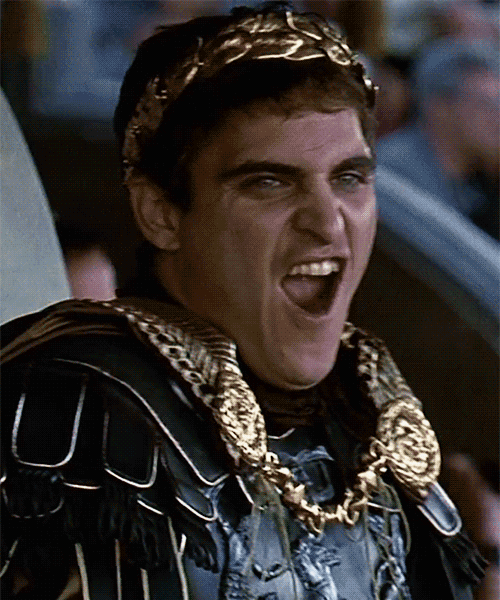
This was, surprisingly, my first time watching Gladiator in a theatre. I’ve seen it in practically every other format imaginable, including on a laptop, as an in-flight movie, and once, during a momentously long bus trip in Greece, on my phone. I get something new from every re-watch. Gladiator may not be the most historically accurate portrayal of ancient Rome, but that’s part of what makes it so compelling.

After my latest movie night, I scribbled down some spur-of-the-moment opinions. I now present these scribblings to you, after editing them and fleshing out a few of the points I find especially interesting. Fair warning if you haven’t seen Gladiator: I’ve written this assuming you have at least some sense of its plot and characters. If you’d like to avoid spoilers for a movie that came out a quarter century ago, turn away. Turn away and go watch Gladiator: I promise it’s a good time!

-I can’t think of any movies about Northern European people facing off against Romans, where the Romans are unequivocally the villains. Leave me a comment if you know a movie that matches that description; I might have to watch it and write about it…
-So many pop-culture evil armies owe their existence to ancient Rome. The legions in Gladiator’s opening sequence are hyper-organized, ruthlessly efficient, and armed with a veritable tasting menu of weapons. In Hollywood movies, it’s fairly common to see armies like this facing off against a free-spirited, ragtag band of protagonists, but here, the Germanic tribes are the opponents. The only clues we’re given about the legions’ protagonist status are a montage of soldiers’ faces (evil armies tend to be more faceless in pop culture), Maximus’ big stirring pre-battle speech, and the presence of a heroic dog.

-I have more thoughts on the dog. I want to know its story! It features prominently in the opening battle, but once Maximus gets betrayed by Commodus, the dog vanishes from the story. If they ever make Gladiator III, I propose a gritty survival drama about this dog exploring the Roman frontier.
-The opening battle pits a faceless horde of barbarians against a faced, almost personable war machine (the leadup to the battle features familiar, warm interactions between Maximus and his men).
-When we first meet Commodus and Lucilla, their relationship status is unclear. We soon learn that they’re siblings, but in their first scene, they could pass for a couple. What excellent foreshadowing…

-I wonder if Lucilla was inspired by the Agrippinas. These were a pair of women, mother and daughter, from the Julio-Claudian dynasty. They were both entrenched in Roman imperial politics and led fascinating lives. Lucilla has the military connections of Agrippina Major, and, later in the movie, the anti-emperor plotting and scheming of Agrippina Minor (although she plots against her brother and not, like Agrippina, her son). This might be one of many instances of Gladiator mashing up different periods in Roman history. The Agrippinas were both active in the first century CE, while Gladiator takes place about 120 years after Agrippina Minor’s death.
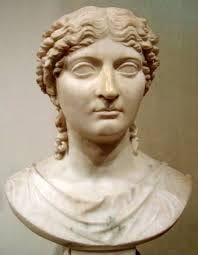
-Gladiator’s a little infamous among classics nerds for imposing republic-period political discourse onto the Aurelian era. Imagine if everyone now wouldn’t shut up about hot-button political issues from 1845, and you get a sense of how strange this discourse feels!
-There’s a pop culture association between republics, democracies, and intellect: the thoughtful, elderly emperor Marcus Aurelius serves as an example of this trope.
-Speaking of Marcus Aurelius, his desire to name a general as his heir reads to me like a nod to Rome’s later history. Military men like Maximus became emperors more and more frequently at the tail end of the Roman empire.
-Maximus’ little effigies of his family highlight some oft-overlooked aspects of Roman religion. Ancestor worship and household gods (or Lares) were very important to the Romans, but I rarely see them depicted in pop culture. Well done, Gladiator!
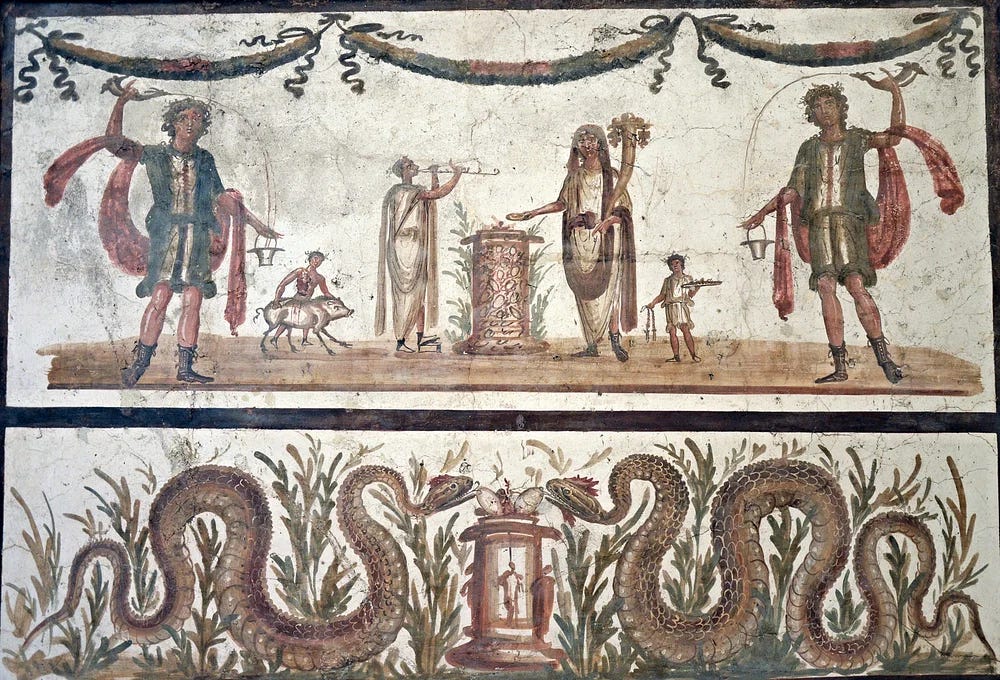
-There are echoes of midcentury Bible movie epics in the Gladiator’s North African sequences, with their Orientalist music and sketchy characters like the merchant who sells “queer giraffes.” These are tropes that date back to antiquity, and I’d love to see them evolve a little. Or evolve a lot.
-The main gladiator characters all hail from different parts of the Roman empire and highlight its population diversity. Juba is from Africa, Maximus is from Spain, and, while we never learn Hagen’s backstory, he’s played by a German actor and speaks with a heavy accent. He’s definitely coded as someone from the northern reaches of the empire.
-Maximus always shares his battle strategy with his fellow gladiators at the last possible minute. This is unrelated to Roman reception, I just think it’s funny. Couldn’t you talk things over the night before, Max?
-I’ve never seen any ancient depictions of Roman women wearing face jewels or face paint, the way Lucilla does throughout the movie. However, there are artworks of women from Bronze-Age Greece with similar makeup: this might be another case of Gladiator mashing its ancient Mediterranean eras together.
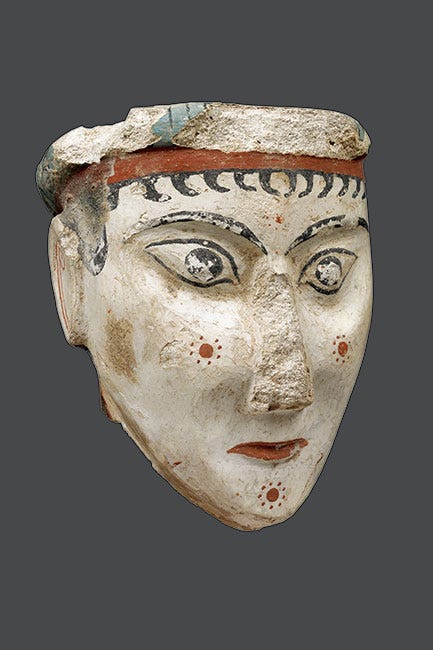
-Derek Jacobi’s role as the scheming Senator Gracchus is a fun case of layered reception. Jacobi played the title character in the iconic 1970s BBC miniseries I, Claudius, which is all about powerful Romans behaving badly and getting into power struggles. It’s thrilling stuff, and makes the political backstabbing in Gladiator feel tame.
-There’s a copy of the Sutton Hoo Helmet in the Coliseum’s armoury! Maybe someone on Gladiator’s prop team had a soft spot for the Anglo-Saxons…
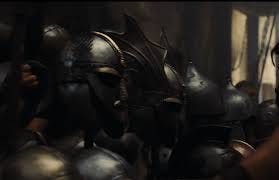
-The first Coliseum fight sequence involves Rome adapting and consuming its own history. The gladiators are supposed to recreate a battle from the Punic Wars and demonstrate Rome triumphing over their old enemy, the Carthaginians. By Commodus’ time, the Carthaginians had been long defeated, but their memory lingered on in Roman collective memory. If literary works like the Aeneid are anything to go by, the Romans were working through the Punic Wars generations after they ended. One of the ways we humans process important historical events and their effect on our collective psyche is to turn these events into entertainment. It’s neat to see that reflected in Gladiator, which is, in turn, working through a specific point in Roman history and unpacking it for a later audience.
-There’s a few little details of gladiator life that this movie absolutely nails. Their food matches accounts of what gladiators actually ate (for more on that, I recommend Max Miller’s attempt to eat like a gladiator). There’s also a brief sequence where prizes get tossed into the crowds, not unlike the t-shirt cannons and raffles at modern sports events. Lots of popular history sources, including the website for the Coliseum, mention similar prizes getting tossed into the amphitheatre’s crowds: I’d love to do some more research on how we know this.
-Commodus’ manchild brand of villainy has aged extremely well. Thinking too much about modern-day incels, alpha males, and their ilk makes me want to vomit, so that’s all I’ll say on the matter.

-The Battle, which is arguably the best part of Gladiator’s soundtrack, first appears in the opening sequence. It returns near the end of the movie, when the conspiracy against the emperor comes to a head. I read The Battle as a representation of Rome at its most Roman, doing the things Rome does best in the popular imagination: wars of conquest, crises of succession, and covert plotting and scheming.
I discussed The Battle in an instalment of Reception Radio a while ago, if you’re interested:
-Commodus’ marble statue armour bears a striking resemblance to the famous Augustus of Prima Porta statue. This has got to be both intentional and ironic. I can absolutely imagine Commodus choosing to visually emulate Rome’s first emperor; by the Aurelian era, Augustus was deified and a fixture in Roman organized religion. Commodus’ fashion choices remind us that he occupies a quasi-divine place in Roman society, but also that he’s a pale shadow of the emperors who came before him!
-Gladiator ends with both its villain and hero dead in the arena. As in actual ancient Rome, it’s up to a woman to deliver a public spectacle of mourning. Lucilla (wearing a very anachronistic corset, for some reason) delivers a eulogy for Maximus to the Coliseum crowds. In contrast, Juba closes the movie with a quieter, more personal funerary rite when he buries Maximus’ family effigies.
-Finally, I always walk away from Gladiator thinking about how an ancient Roman audience would react to the movie. I firmly maintain that, despite some oddities and anachronisms, they would eat it up. Revenge plots are timeless. Riches-to-rags plots are timeless. Sports stories are (usually) timeless.
If you have Gladiator opinions of your own, sound off in the comments. I can talk about this movie all day and I’d love to hear from you!



